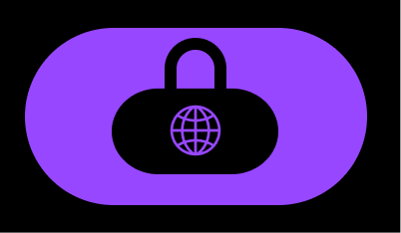Generative AI tools have exploded in popularity, transforming how students learn and educators teach.
Last month at SIGCSE 2025 in Pittsburgh, PA, Codio CEO Philip Snalune moderated a panel discussion titled “Embracing Widespread Student Use of AI in Computing Education: Evidence, Insights, and Strategies,” featuring two esteemed educators:
- Dr. Rachel Chung, Clinical Associate Professor at The College of William & Mary
- Dr. Laura Cruz Castro, Instructional Assistant Professor at The University of Florida
Their conversation offered candid, practical perspectives on how AI is reshaping university classrooms and broader educational policy. Below is a summary of the key themes, takeaways, and emerging strategies—plus some real-world examples of AI tools like Codio’s Coach AI in action.
Institution Policies in Transition
Dr. Chung shared her experience serving on an AI policy committee at William & Mary. While official policies are still under development, individual faculty members have already applied different levels of AI use in coursework. Dr. Cruz Castro noted something similar: Her institution has not yet codified a top-down AI policy but is increasing campus-wide discussions and offering training or tools. Their stories underscore a universal truth–policy lags behind practice as faculty grapple with new AI realities.
Dr. Cruz explained that while her institution hasn’t implemented policy changes yet, there has been “some communication, mainly among us… things that each of us are adding in our syllabus” to address AI use.
In the interim, many institutions allow individual professors to set their own guidelines. This creates a challenging landscape where “students are very worried about being reported” to honor councils when they use AI tools that are permitted in one class but prohibited in another.
Students Seeking Clarity
One recurring challenge students face is inconsistent rules across courses. Some instructors prohibit AI-generated code entirely; others encourage or even require it. Both panelists stressed the importance of clear syllabus guidelines and transparency around which AI uses are permitted—or not.
Rethinking Assessment in the Age of AI
Moving Beyond Traditional Testing
Assessment strategies are changing rapidly as instructors balance academic integrity concerns with the potential of AI to improve learning outcomes.
- Technical Interview-Style Exams: Dr. Cruz Castro implements timed coding questions in a controlled environment, much like real-world job interviews. Students face minimal external help and can be monitored via real-time analytics, focusing on genuine problem-solving rather than AI-assisted answers.
- Paper Instructions: One of Dr. Chung’s strategies involves distributing exam prompts on paper while students still code on computers. “Receiving instructions on paper makes it much harder to use generative AI during exams,” she noted.
These approaches reflect a broader push to measure students’ true understanding by reducing the likelihood of simple copy-paste solutions from AI tools.
Real-World AI Tools: Support, Not Shortcut
Like any tool, AI can be misused—but when thoughtfully integrated, it can help students learn more effectively and free instructors for richer tasks.
Getting Students Unstuck
Dr. Chung emphasized how virtual coaching can address a critical gap in learning:
“Students need someone to unstick them when they get stuck. That’s why we have TAs, but TAs aren’t available 24/7.”
Codio’s Coach helps by offering just-in-time support, “translating error codes into plain English,” especially valuable when students are working late at night with no one else around. “When you’re coding at 10:00 p.m. with no one to help, an AI tutor can make a huge difference,” Dr. Chung pointed out.
“We found exactly the same, which is that students were very interested in understanding the errors,” added Dr. Cruz Castro. In fact, error-message explanations account for a majority of Coach requests, showing how AI can empower learners to move forward at their own pace.
Customizing Content Through AI
Dr. Chung also highlighted generative AI’s ability to customize coding contexts on the fly—making tasks more relevant for non-CS majors or specific career paths (business, healthcare, etc.). Instead of standard “Hello world!” assignments, instructors can adapt coding exercises to real-world scenarios like analyzing sales data or modeling patient information.
“Any human language can now be a programming language,” she noted, underlining how AI can lower barriers for students who don’t speak English as a first language.
Engaging Students Online and Asynchronously
Both panelists teach asynchronous online courses and leverage AI-enabled tools to maintain high engagement.
- Short Video Demonstrations: Dr. Cruz Castro embeds concise video walkthroughs in Codio modules, significantly boosting student participation. Learners watch a 10-minute video on one side of the screen, code on the other, and receive instant feedback.
- Immediate Feedback Loops: Dr. Chung finds that auto-grading with rich, instant feedback is critical for online learners, letting them quickly identify mistakes and correct them—especially useful in environments without TAs.
Monitoring Process over Product
Student behavior metrics are invaluable for understanding how—and how much—students are working, which can flag issues early.
- Proactive Intervention: By the second week, Dr. Cruz Castro checks assignment completion times to see who might be submitting at the last minute. She can then reach out to students with support or additional resources.
- Building Self-Awareness: Dr. Chung noted that showing students a playback of their workflow “was more proactive; it wasn’t judgmental.” Seeing their own patterns helps students recognize if they are skipping essential steps or relying too heavily on AI.
Tackle Academic Integrity with Better Design
Rather than focusing purely on punitive measures, the panel emphasized well-designed assignments that encourage authentic learning. If tasks require deeper thinking—like debugging flawed code, integrating multiple concepts, or adding contextual nuance—mere copy-paste from an LLM won’t suffice.
“We’re here to guide them through struggles—if they never struggle, they might never truly learn,” said Dr. Chung, capturing the panel’s collective sentiment.
Where Do We Go From Here?
Key Takeaways for Faculty
- Clarity and Consistency: Provide explicit guidance on which AI tools are allowed—and how.
- Design for Authentic Learning: Focus on tasks that reward conceptual understanding (e.g., debugging) rather than basic coding patterns.
- Real-World Context: Adapt AI-generated examples to students’ disciplines or interests, making the work more meaningful.
- Analytics as a Teaching Tool: Monitor student time-on-task, external paste events, or AI usage trends to guide personalized interventions.
- Think Beyond Policing: Frame AI as a supportive tool rather than a threat—encouraging students to master critical thinking and debugging skills.
The Future of AI in Computing Education
Though concerns remain, both Dr. Chung and Dr. Cruz Castro are optimistic about AI’s potential. Tools like Codio’s Coach, they predict, will lighten instructors’ workloads (fewer trivial syntax questions) while opening new avenues for individualized, industry-relevant assignments. Students who master these AI-centric approaches will be well-prepared for the rapidly evolving tech landscape.
Closing Thoughts
The panel distilled a clear message: embracing AI tools can enrich learning rather than dilute it. By updating assignments, refining exam techniques, and offering AI-based “coaches” instead of “answer bots,” instructors can empower students to achieve more than ever in computing education.
“If you can leverage AI to unlock creativity, suddenly coding isn’t just about commands—it’s about possibilities,” said Dr. Chung.
Looking to explore how Codio can bring AI-driven coaching, auto-grading, and dynamic course design to your program? Request a demo to see how our platform can support your institution’s evolving needs.





